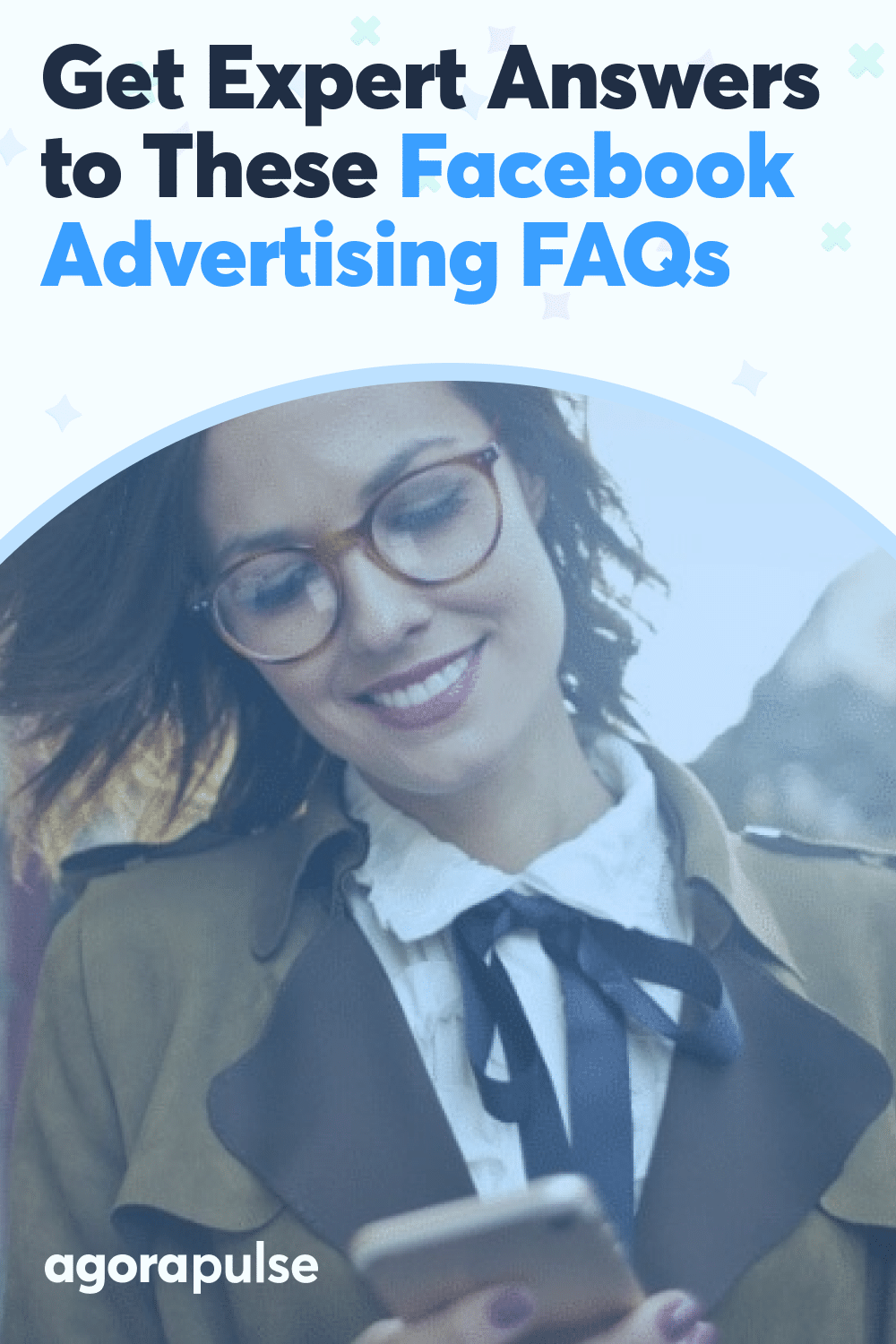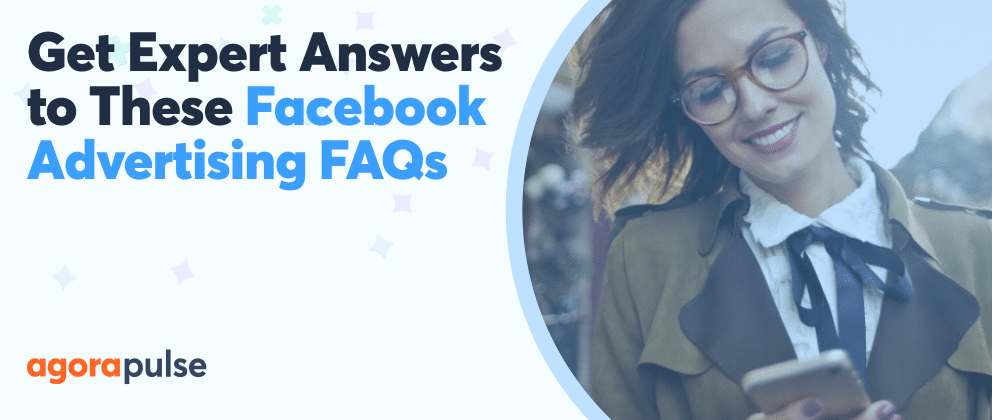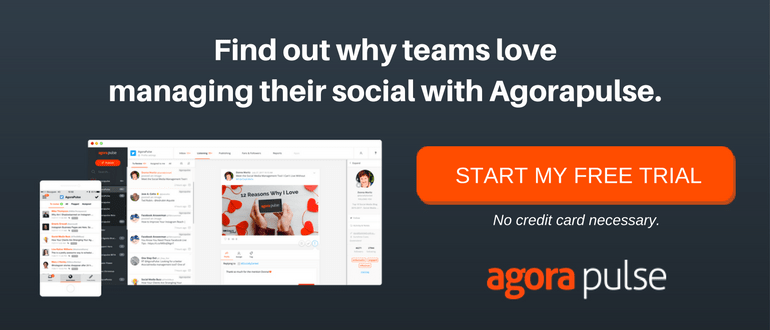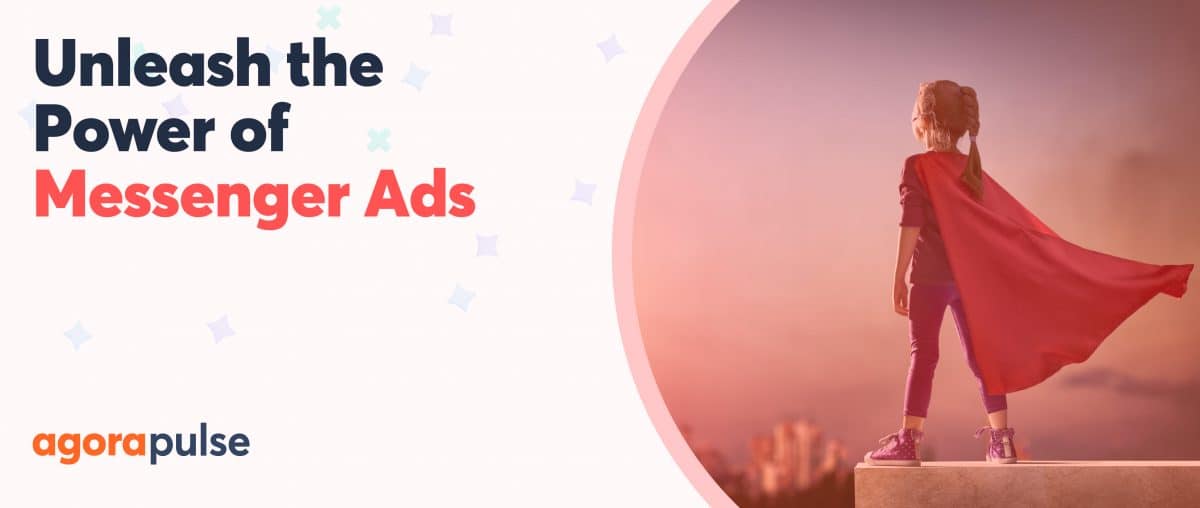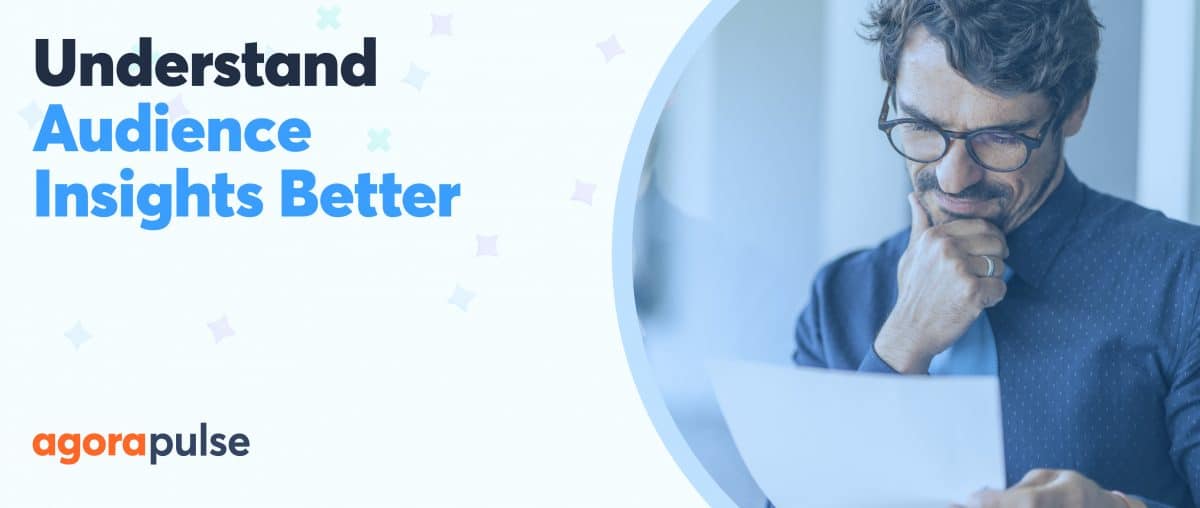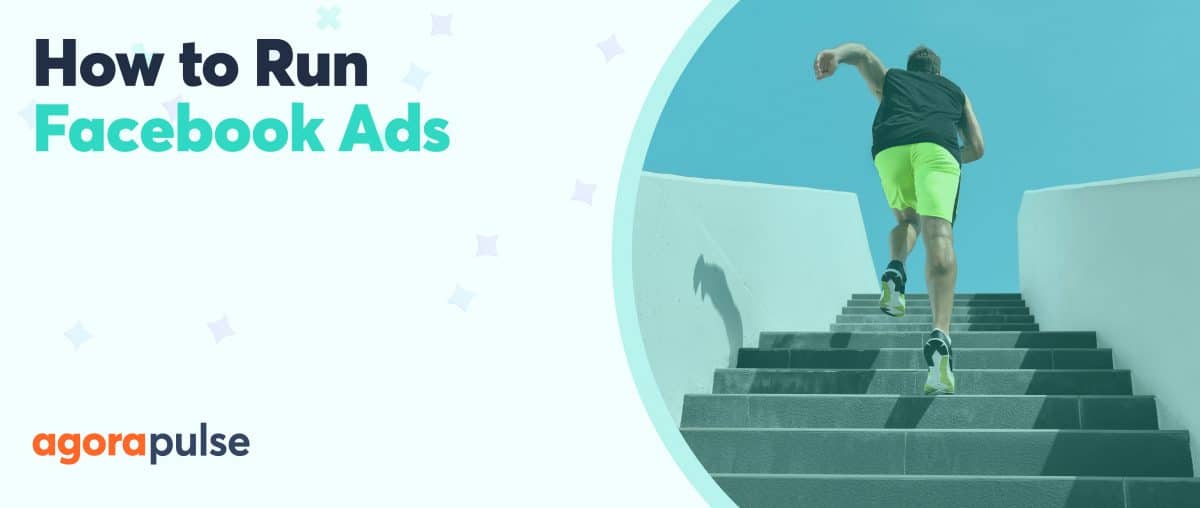Facebook ads can be a powerful part of your social media strategy—when you use them correctly. But until you’re consistently seeing a clear ROI on your ads, how do you know if you’re doing Facebook advertising right?
In our most recent episode of Social Pulse Weekly, I was joined by Amanda Robinson, also known as “The Digital Gal.” She’s a Facebook ads, analytics, and chatbot expert, so I wanted to get her take on some of the questions I frequently hear about Facebook ads.
Whether you’re a Facebook Ads rookie or seasoned pro, you’ll enjoy hearing Amanda offering insights that will help you take your Facebook advertising to the next level.
Q: Have you found a way to make Facebook ads more productive and to get better outcomes overall?
According to Amanda, marketers tend to make things too hard on themselves regarding Facebook ads. They’re trying to do too much and are trying too hard to keep up with their competitors.
Instead, Amanda recommends starting out small—for instance, boosting a post—and seeing where that goes. In other words, walking before you run:
“You don’t need to go all-in and feel overwhelmed and feel completely drained, just trying to produce ads that you hope will convert. You don’t have to get right nitty gritty down into the science.”
Instead, Amanda recommends taking it slow, one step at a time. For instance, if you’re already doing posts on your page, work with that (e.g., boosting a post) rather than going all-in and creating every single ad type: carousel ads, video ads, dynamic images, etc.
Unless you have a big team of people who can pump out content like crazy for you, start small. You’re one person, and you need to be able to work within those limits. So, don’t overwhelm yourself when it comes to doing Facebook advertising for your business.
Q: What advice do you have for someone who is just getting started with Facebook ads?
The very first thing Amanda recommends is getting your Facebook ad pixel installed on your site: “You need to start collecting that data because it will come in handy down the road, so that when you’re ready to leverage it and use it, you have enough data sitting there.”
The next thing she recommends is paying attention to your page Insights. Your Insights will give you a summary overview, as well as details like video views, page engagements, and reach. Those metrics are the ones you’re going to work at increasing with your ads. And if you discover that no one is watching your videos or engaging with your organic content? This is important to know, too, because then there’s really nothing to work with there.
Once you’re ready to start using ads, Amanda recommends promoting your posts or doing your ads through Ad Manager. You want to start spending some money to help you get more video views and increased engagement for your content. That should be your focus, not immediately getting conversions:
“[D]on’t try to go blazing out to get as many sales as you can, and as many leads as you can. We’re not going to the end goal right away. Facebook ads are the slow game, your pillar of stability.”
You need to grow on the platform to have a really solid foundation—before you move on to focusing on sales.
And how do you do this, according to Amanda? Through creating amazing content: “Once you have amazing content happening, put some ad dollars behind [it] and watch your video views grow, and your engagement grow. And if you don’t have videos? Start now.”
Q: If a company wants to release a product, what should their ad strategy look like?
According to Amanda, there’s a ton of variability between businesses and products, so she would need to ask a bunch more questions, such as:
- How much organic activity are they already getting on their page?
- Is the product already selling?
- If so, how much have they sold?
- Is there a market for the product?
- Is there a clearly defined audience that already responds to their ads?
And if even one of these is a no, this is a sign to take a step back and slow down: “We’re going back to the drawing board, and we’re going to address that issue. Because the bottom line is we could spend tons of money on lots of product ads for you, but it’s going to be wasted dollars that could probably be better spent somewhere else.”
Make sure you’re taking all the right steps to build your audience. And again, according to Amanda, this means getting video views and engagement on your posts:
“Engagement is the holy grail of what you need to be achieving on Facebook to make everything more effective … and to keep your ad spend less.”
This is also where the whole “know, like, trust” factor comes into play. You want to make sure you’re showing up in your fans’ feeds all the time, so that when you ask for the sale, you’re asking a warm audience—people who have already been watching your videos, engaging with your page, and visiting your website.
With boosting, you have one ad, one set, and one campaign.
That’s it.
Q: Can you walk us through the different types of audiences you can use in your ads?
The very first audience Amanda recommends setting up is your website visitors’ audience. If you’ve set up your Facebook pixel, it will already be tracking Facebook users who have been on your website—either on your website in general or on specific pages.
But keep in mind that this audience is only good for six months (or 180 days). After this, that person is moved out of your website visitors’ audience and you can no longer reach them with your ads.
According to Amanda, this is your single most valuable audience.
Once someone has visited your site, you need to keep serving them content and getting them to watch your videos. It might cost you a bit more because this is going to be a smaller number of people. However, because they’ve been to your website, there’s a much higher likelihood that they’ll want to do business with you.
Want step-by-step instructions for how to create an audience of your website visitors? Check out our post How to Target Your Website Visitors with Facebook Ads.
Other audiences Amanda recommends are a video views audience and an engagement audience. These audiences can stick around for 365 days, meaning you have a much longer window to reach them with your ads.
She also recommends having an audience of people who have engaged with your Facebook page and people who have engaged with your Instagram account.
Finally, she recommends having a customer list audience, which you create by uploading a list of emails. Facebook will match your list to any corresponding Facebook accounts, and will then allow you to create an audience of customers you can market to.
Apart from custom audiences, you may also want to create a saved audience based on geography, demographics, interests, behaviors, or job titles.
For instance, if you want to target people with the job title of dental hygienist who live within a 30-mile radius of Toronto, you can craft that audience and have your ads shown only to that audience.
Pro tip: When you’re in Ads Manager, make sure you go to the Audience Insights tool. Use this to start researching audiences, by figuring out different pages and interests you can target. This will lead to higher-quality audiences than using Facebook’s suggestion tool (which is simply offering suggestions, not doing any actual research for you).
Keep in mind that the main goal when using audiences is to try to move people from a “cold” audience to a “warm” one that knows, likes, and trusts you.
Your saved audiences (which will typically be cold) aren’t going to cost you a lot to advertise to.
But as you start moving them over to custom audiences, they’re going to start warming up and costing you more. And that’s OK. It’s worth it because you’re going to get more conversions, whether that means more people clicking through to your website, signing up as leads, or making purchases.
Download your FREE Facebook 101 workbook and essential guide.
Q. How long should a typical ad be?
According to Amanda, this really comes down to testing. It’s so unique to each page and product. For instance, if you’re selling a course (which is a higher-ticket item), your text and video ads will likely be longer.
In general, Amanda recommends keeping your copy “short, sweet, and directly to the point.”
But again, it really depends on your audience and where they’re at in your funnel. For instance, if you’re hitting a cold audience, you probably don’t want to give them a novel, whereas a warm audience may appreciate more information and content.
That is why Amanda really recommends testing a wide variety of ads. Try short text ads, long ones, short video ads, long ones, etc. Run them simultaneously, and then see which ones are performing best. Switch off the ones that aren’t performing well, and then keep replicating the ones that are.
Amanda urges people not to get hung up on trying to compete with other advertisers: “You’re not competing against your competitors when it comes to Facebook ads. I know it sounds crazy, but you’re competing against your own numbers.”
Try a variety of ad content, and test different variations, rather than pouring all your ad dollars onto one “perfect” ad you’ve spent weeks crafting (and that may or may not work).
Pro tip: Here’s what Amanda does with any ad budget that lands in her hands: She uses 80% of the budget to use strategies that are tried and true and the remaining 20% to experiment. She’s constantly testing different ad types and different angles, and this is how she gets huge results.
Q. Any recommendations regarding the optimal length of post copy?
While Amanda acknowledges her specialty is really ad copy, she believes post copy is really about connecting with your audience and speaking their language.
In other words, there is no optimal length. See what resonates with your audience, and remember that your copy needs to match up to the audience you’re serving it to.
So just keep testing different lengths, and see how your audience responds!
Q. What’s the biggest mistake you see people make with Facebook ads?
Amanda believes focusing on conversions right from the outset is one of the biggest mistakes people make with their ads: “[T]hey’re going straight for the sale to a cold audience. So they’re putting their ads together and they’re picking a geographic area and they’re spending a huge amount of budget and they’re wondering why their Facebook ads aren’t working.”
Instead, as mentioned previously, work at building and nurturing those relationships before you go in for the sale. It’s takes time—not just a few weeks but months.
Invest in your page, invest in your ads, and invest in your audience.
And above all, make sure you manage your own expectations. Know that it will take around three months before you start seeing results—and that’s if you’re hitting the mark on everything you’re doing.
Watch the Entire Episode of Social Pulse Weekly
If you didn’t catch the live show with guest Amanda Robinson, you can still watch the show recording at your leisure:
How to Stay on Top of Your Facebook Ads
We covered a ton of information in this episode of Social Pulse Weekly. So if you’re feeling overwhelmed by the prospect of advertising on Facebook, don’t worry … We’ve got a tool you can use to help you stay on top of everything: from your ad spend, number of clicks, CTR, reach, impressions, and more. The FREE tool is called AdsReport.
The goal of AdsReport is to make your job as a social media manager easier, giving you access to all your metrics in one place. If you’re doing ads for your company and need to report back on their performance, you can even just grab screenshots from the tool and put them in a PowerPoint or presentation.
Amanda’s been using the tool and recommends it as a way to always stay on top of your Facebook ads:
“It’s a beautiful, high-level view of what’s happening with your ads … It’s very simplified and very straightforward. So it’s certainly something that I think is going to bridge the gap [for] people who are just learning Facebook advertising.”
Simply log in with your Facebook, and you’ll get immediate access to all your Facebook ad metrics and insights. Doing so won’t cost you a cent.
Try out AdsReport for free now!
Final Thoughts
The biggest takeaway I got from my conversation with Amanda was this: There is no single winning Facebook ads formula. You may need to spend a lot of money on ads before you start to get traction. But according to Amanda, this shouldn’t hold people back from using ads: “It’s not this burden, this overwhelming task. It’s actually a lot of fun. And you get to learn more about your audience and your customers and superfans. Think of it as just this cool opportunity to dig in and learn more.”
Sign up now for a FREE demo.
